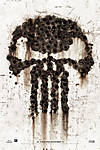It was interesting discussion here about M1, armors, tank losses etc.
So I will clarify some things here based on the lates tank lovers community research from across the world (yeah I know, a bit pathethic it sounds).
First, Chobham is not completely proper designation name, the proper codename of UK/US composite armor is Burlington, and it seems that there were two US and one UK version, the two US versions are called to simplify BRL-1 (M1) and BRL-2 (M1IP, M1A1), the UK version is popularly known as "Chobham", despite the fact that whole armor research program was designated "Burlington".
The US completely resigned from Burlington around 1986-1988 when M1A1HA was fielded with completely new armor with DU alloy elements, we know that there are most probably 3 generations of this armor, DU armor is not offered for foreing customers, so in armor protection, export M1A1's and M1A2's are probably reduced to the level of old M1IP and M1A1.
But the most interesting fact, currently we know that Burlington/Chobham and all NATO (and similiar to NATO) composite armors are not based mainly on ceramics (there are even doubts that Burlington even had ceramics as elements of armor, some are theoretizing after reading documents that BRL-1 did not have ceramics, BRL-2 could have recive some sort of addon ceramic package).
We also know that Leopard 2 (up to Leopard 2A4 version at least) also do not have ceramics in armor (nor perforated plates in main armor layers as it was popularly belived, only one type of non ballistic skirts are perforated to weight reduction).
Instead it seems that modern composite armors are actualy some type of dynamic protection closely connected to NERA (Non Energetic Reactive Armor), other types of dynamic protection are ERA (Explosive Reactive Armor) and NxRA (Non Explosive Reactive Armor).
I have a photos of T-72B layers that seems to be very similiar but simpler design (lack of heavy metal alloy elements, and there is a some kind of rubber as reactive element instead of other types of polymers like polycarbonate for example).
On the photos of damaged/destroyed Merkava Mk4 and M1A1 tanks we could also seen layers of composite plates, the overall array seems to be very closely connected to NERA.
As for losses of tanks in Iraq, oh but there were lost Challenger 2 in Iraq, only British OPSEC is tighter than US, and informations were not widely spread.
1st destroyed Challenger 2, after F-F incident, HESH from another CR2 went through TC or loaders hatch, 2 crew members dead, vehicle completely destroyed after ammo cook off.
Important thing, actually west european tanks survivability level in case of ammo cook off is not very much higher than that of Soviet (Russian/Ukrainian) tanks, and actually 99% of tanks with western design, have similiar ammunition storage to the west european tanks. The only MBT mass produced that have really safe ammunition storage is M1 Abrams, it could be a shock for some people but, well, this is reality.
2nd CR2 hit in a front hull "beak", it is lightly armored (RHA only) plate, then protected by ERA (ROMOR-A), attack was succesfull, insurgents used RPG-29, driver lost part of his foot but crew somehow survived, they have luck that no ammo container was hit by shaped charge jet, vehicle was good for repairs.
3rd CR2 hit in a belly with IED, heavy damage, driver injured, this tank probably never was repaired as the first one.
And there were many more damaged CR2's, due to cuts in spending, many of these never repaired, I heard from some guys close to RAC that they seen approx 30-50 CR2's allready cut in to pieces, RAC will stay in best with only 135 CR2's or in worst with only 35 CR2's, rest will be scrapped.
On the other hand US have approx 8,325-8,725 M1 tanks in inventory, with only approx 2,300-2,500 in active service, most of them are M1A2SEP's (approx 1,547) and the rest are M1A1SA (approx 790-800) + USMC M1A1HC/FEP's (approx 100-200).
Yeah ok, so this is short description, if someone want to see these photos os armor arrays, give me a hint and I will post them.

*All infos based on several sources, also official.








































